|
BEIJING (Day 1 - part 2)
We then waliked through the world's longest corridor, stretching for 2,000 feet. The Long Corridor (Chang Lang) parallels the lake and leads from the palace on the east side of the complex to the Marble Boat on the west side. It linked various scattered buildings on the southern slope to create a unified complex.

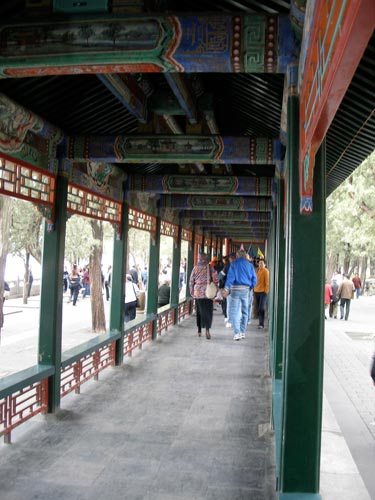

There are more than 14,000 traditional Chinese paintings on the beams and crossbeams. Some of them are of animals, flowers and landscapes. Others are scenes from literary classics.
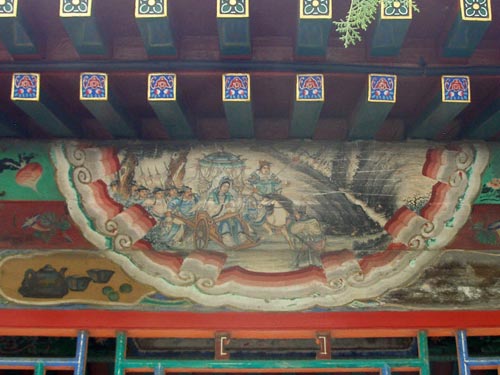


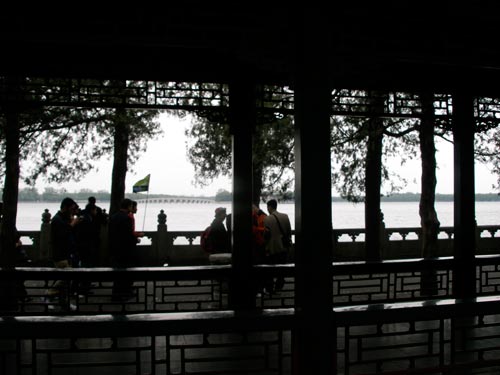
A glimpse of Kunming Lake and 17-Arch Bridge
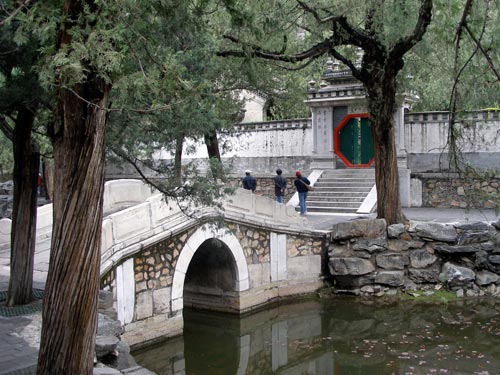
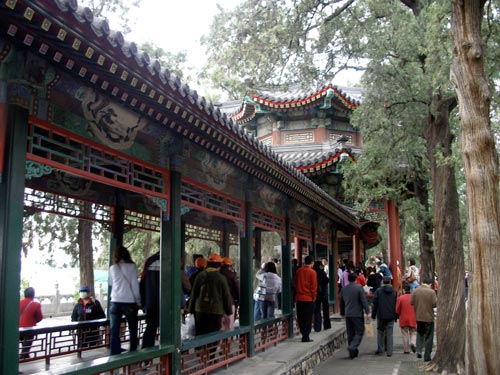
Four octagonal pavilions were placed at bends and undulations as the corridor followed the contours of Longevity Hill.
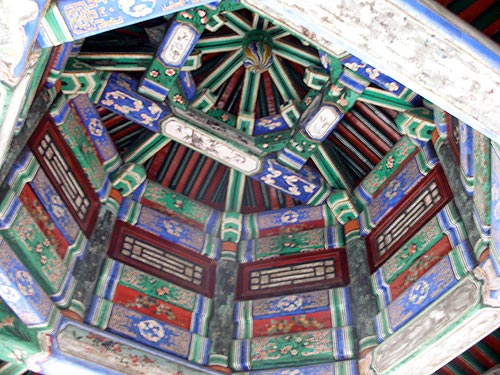
A view of the ceiling
Halfway across
Another large hall (the Cloud-Dispelling Hall) briefly interrupts the flow of the corridor.
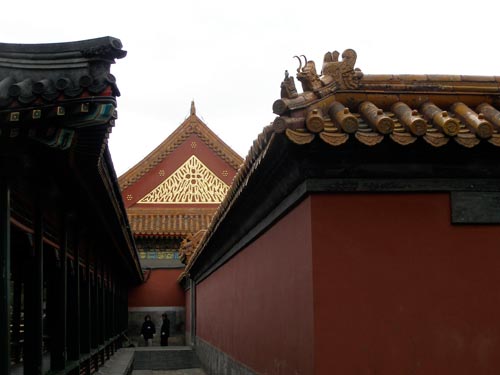
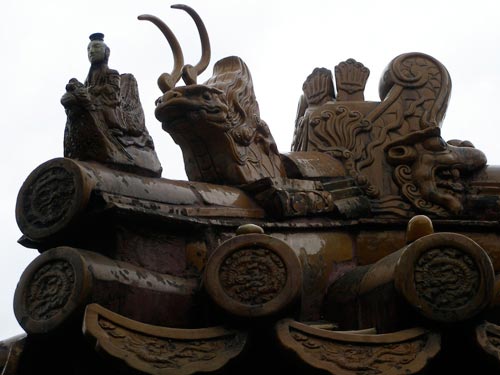
Chinese imperial roof decorations

The Temple of Buddhist Virtue (Foxiangge) can be seen from almost anywhere on the palace grounds.
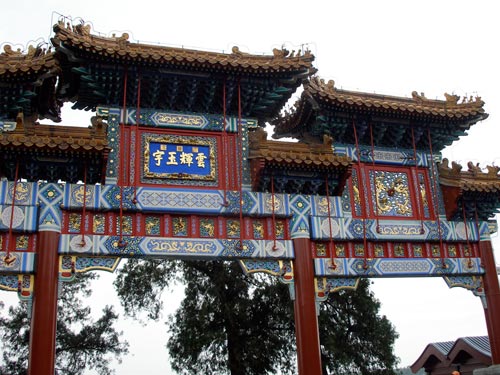
The Yunhui Yuyu Archway (Archway of Gorgeous Clouds and Jade Eaves) was built 200 years ago. It sits on the shore of the lake in front of the hall and describes the beauty of the hill and lake.
A pailou (also known as paifang) is an archway of a memorial or decorative nature. They were built mainly to commemorate the great achievements or 'lofty virtues' of a person. In the old days, many widowed women refrained from remarriage just in the hopes of having a 'pailou of chastity' built for them.
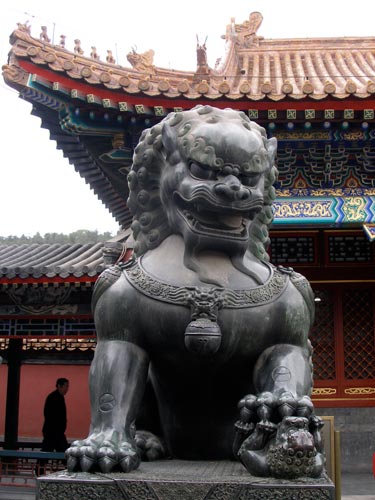
A bronze lion guards Paiyun (Cloud-Dispelling) Gate
The west side of the walkway
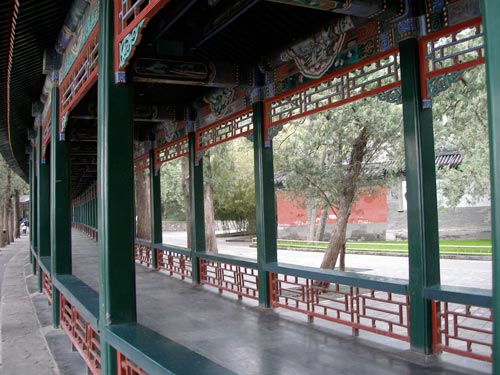
The walkway continues
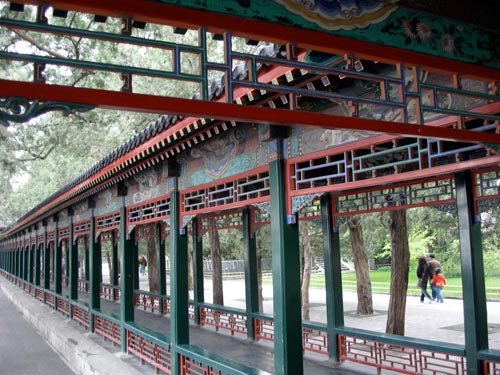
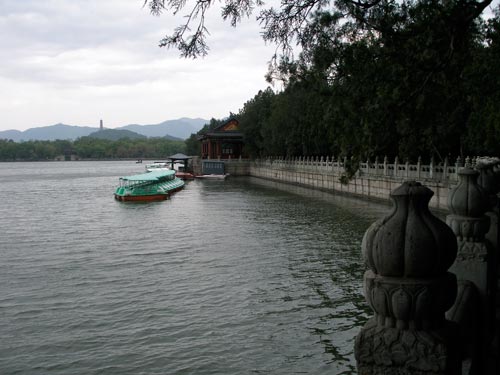
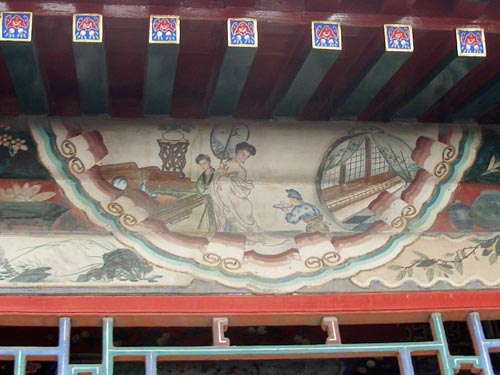
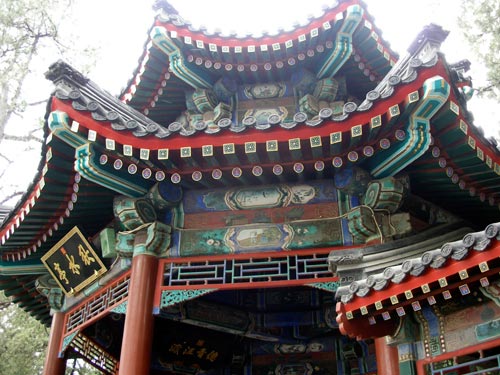
Another of the four pavillions
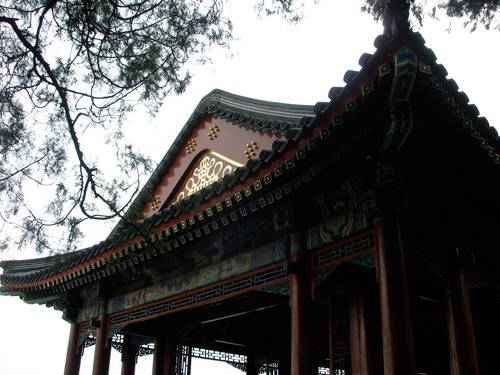
The western section
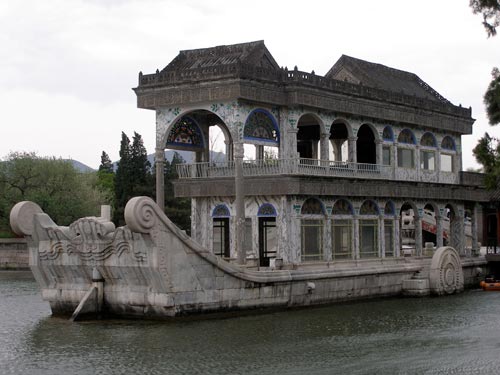
The Marble Boat, also known as the Boat of Purity and Ease (Qing Yan Fang)
The original boat was first built in 1755, and imitated the sailing boats which Emperor Qianlong took during his inspection to Southern China. The pavilion had a base of large stone blocks which supported a wooden superstructure. It was intended to be a symbol of stability of the Qing Dynasty (1644 - 1911), derived from an old saying "water can carry the boat as well as overturn it." The symbolism is that the boat is the ruler and the water is the common people, hence a marble boat that didn't actually float could never be overturned. Of course, it is a boat that can never move forward either.
In 1860, the boat was destroyed, but the Empress Dowager Cixi had it restored in 1893. The new two-story, 118-foot long structure contained elements of European architecture, such as imitation paddlewheels. In order to create this extravagant work of art, the empress embezzeled funds that had been earmarked for the creation of a modern navy in 1886. Unfortunately, the controller of the Admiralty, Prince Chun, owed his appointment and much of his social standing to the empress, who had adopted his oldest son to become the Guangxu Emperor. Because of this, he probably saw no other choice than to condone the embezzlement.
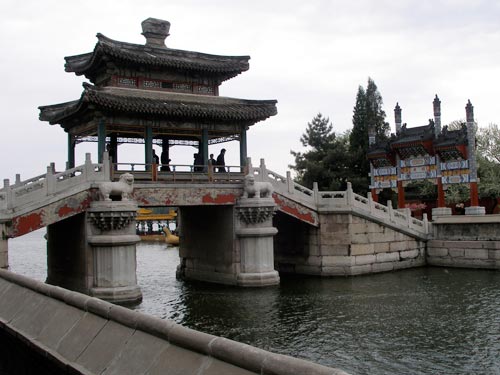
Xing Qiao (Bridge of Banana Plant). This bridge gets its name came from a line of a song in the Shijing (The Book of Songs), the earliest collection of Chinese poems dating back to the 8th century BC, which says "Banana plants are randomly afloat, I will have to pick them up here and there".
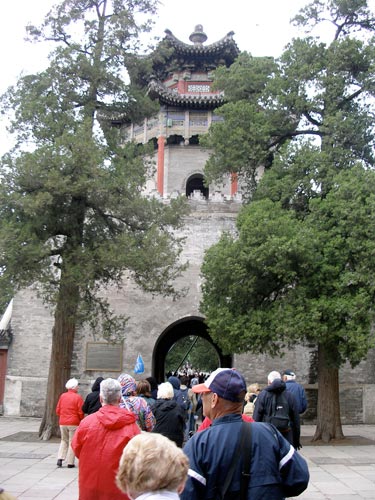
Suyunyan Chengguan (Gate Tower of Cloud-Retaining Eaves) was originally built during Emperor Qianlong’s reign.
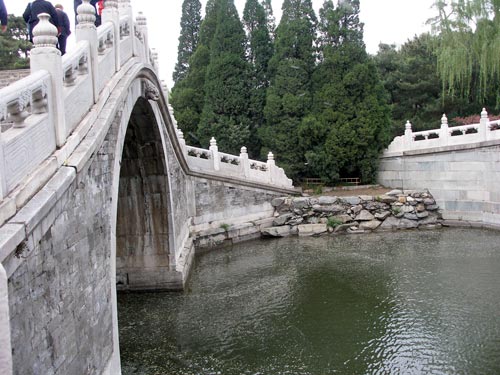
Crossing over the Yu River via the Jade Belt Bridge.

A few from the bridge of a parallel bridge

A cherry tree bursts forth with spring color.
|
|

